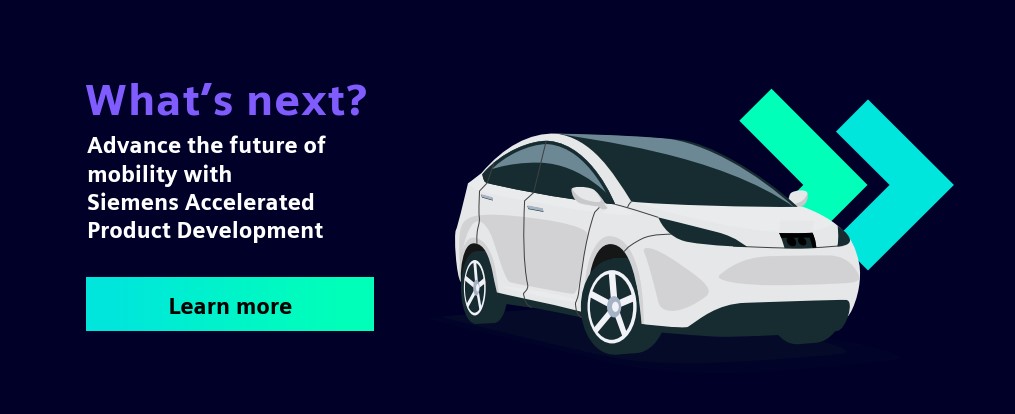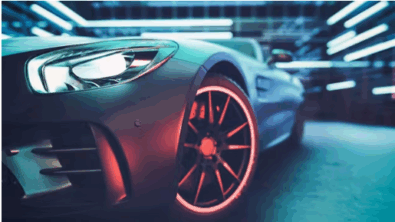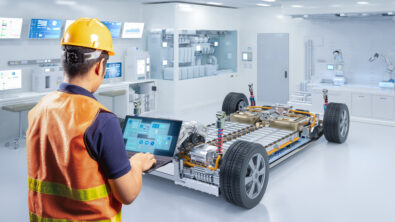Integrated end-to-end collaboration for software defined vehicle development

The shift from hardware-driven to software-driven vehicles has opened opportunities for technology-focused competitors to take the lead in the innovation race. To get their products to the market faster, these new entrants are compressing development cycles and putting pressure on OEMs and suppliers to do the same. This pressure is exacerbated by fast-changing consumer demands and legislation for greater sustainability.
Watch the video to learn how integrated end-to-end collaboration can help you accelerate automotive product development.
Software defined vehicle development is on the rise
Automakers are transitioning from combustion engines to electric vehicles and, simultaneously, from hardware-centric designs to software-defined vehicles (SDVs) to support features like ADAS and
autonomous capabilities.

Modern cars are inevitably becoming systems of systems that must perform sustainably, safely, and reliably while interacting with the environment and surrounding
infrastructures. The subsequent drastic increase in electronics and software content creates unique development challenges for OEMs and suppliers.

When software and hardware are out of sync, vehicles malfunction, performance suffers, and safety and security are compromised. Introducing exciting new features while preventing brand-damaging integration failures requires robust development solutions. To successfully innovate and implement those features, you must upgrade your development process.
SDV architectures are deeply interconnected and require enhanced collaboration across multiple disciplines
In software-centric design, every system becomes more connected with every other system. To support the development of software and its seamless integration with mechanical and electronic systems, enhanced collaboration across disciplines is crucial. This is because incorporating complex features like infotainment, autonomous driving technologies, and electrification technologies requires continuous confirmation that all components work together precisely as planned.

Launching the next generation of vehicles before the competition necessitates an approach that strengthens innovation and accelerates development from concept to production. But how can you overcome the rising complexity of software-defined vehicles to deliver innovation faster than the competition?
How can integrated data management help you get digital services to market faster?
With Siemens Accelerated Product Development, you can leverage integrated end-to-end collaboration for software defined vehicle development to achieve—
- Centralized accessibility: Ensure that everyone works with the most current and accurate information
- Perpetual collaboration: Streamline decision-making with consistent access to engineering models
- Automated traceability: Assess and document design changes and development events effortlessly
Advance the future of mobility with Siemens Accelerated Product Development.



